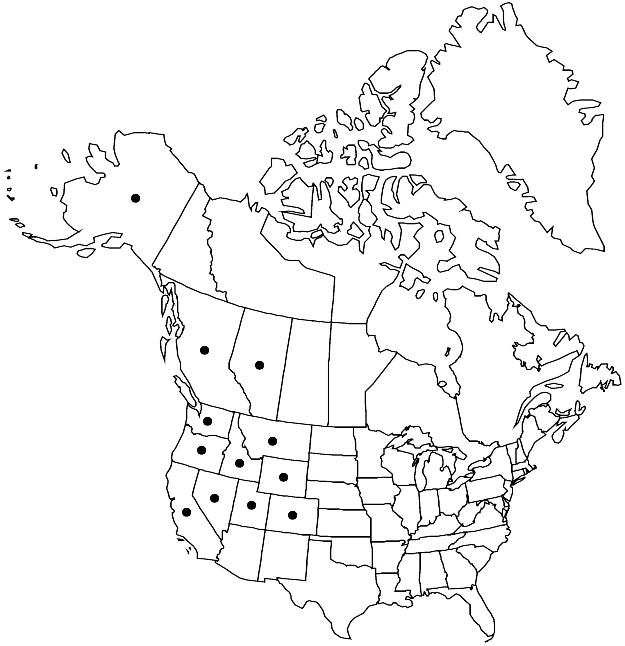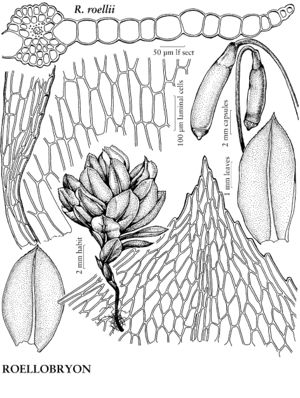Roellobryon roellii
Polish Bot. J. 56: 119. 2011.
Stems 1–4 cm. Leaves sometimes tinted pink or red proximally, small and scalelike on proximal portions of stem, enlarged distally, rosette leaves 4–7 mm; laminal cells 90–150×30–50 µm; basal cells more regularly rectangular, often somewhat narrower than distal cells; marginal cells narrower, walls thicker, forming somewhat distinct border 1–2 rows wide. Perigonia conspicuous, antheridia abundant, yellow, in disklike heads. Perichaetial leaves similar to stem leaves, smaller. Capsule 4–7 mm.
Phenology: Capsules mature summer–fall (Jul–Sep).
Habitat: Litter and rich humus under trees and shrubs, montane and subalpine coniferous forests
Elevation: low to high elevations (0-3200 m)
Distribution

Alta., B.C., Alaska, Calif., Colo., Idaho, Mont., Nev., Oreg., Utah, Wash., Wyo.
Discussion
Roellobryon roellii is rare in Alaska, Nevada, and Utah, and is most common in areas south of the Pleistocene ice-sheets in western North America. Coastal Alaskan-northern British Columbia populations probably survived glaciation in refugia. The species has been found near sea level in coastal Alaska but generally occurs at 500–3200 m. Capsules are rare.
Selected References
None.
